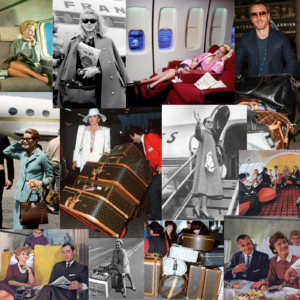My Visit to Monticello
by habituallychic
10 . 29 . 18
When I invited to Charlottesville at the end of September, it seemed serendipitous since I had already been looking into trips to Virginia to tour Monticello, the home of statesman Thomas Jefferson. I added a few days onto the trip and made plans to visit with interior designer Andrew Brown. He wasn’t going to arrive in time for a private curator tour so I took the last time slot they had and returned the next day for another tour with Andrew. It actually worked out since it was cold and rainy for my curator tour and it was beautiful and sunny for our tour together so we could explore the gardens. I’m very grateful to the staff and curators of Monticello for their incredible hospitality and introduction to this historic treasure.
 You meet for your tour on the front porch and must remember to look up. Thomas Jefferson kept meticulous records of the weather each day at Monticello and the weathervane on the ceiling is connected to the weathervane on the roof. He started building Monticello at the age of 21, married the 23 year old widow Martha Wayles Skelton when he was 29, and wrote the Declaration of Independence at the age of 33, and become the third President of the United States at 58.
You meet for your tour on the front porch and must remember to look up. Thomas Jefferson kept meticulous records of the weather each day at Monticello and the weathervane on the ceiling is connected to the weathervane on the roof. He started building Monticello at the age of 21, married the 23 year old widow Martha Wayles Skelton when he was 29, and wrote the Declaration of Independence at the age of 33, and become the third President of the United States at 58.
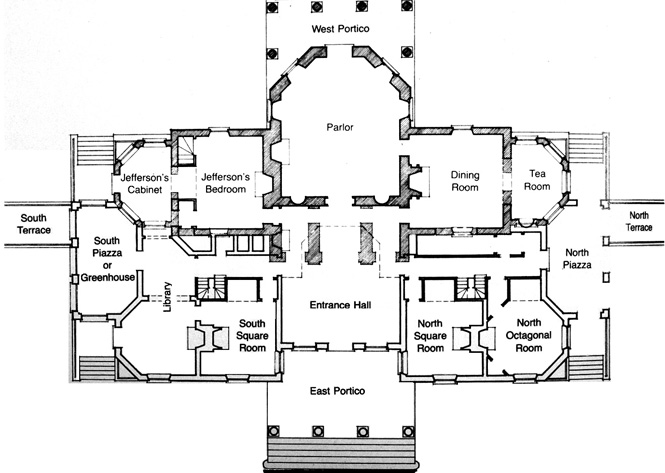
This floorplan gives you an idea of the rooms on the first floor. I was surprised at how small and intimate the house was in person. There is “11,000 square feet of living space that includes the cellars but not the pavilions or rooms under the terraces” according to the guidebook.

This photo of the entry is from Monticello because you’re actually not allowed to take photos inside and it’s always crowded with visitors. I was give rare permission to take photos in some of the rooms and never in front of other visitors.

The Family sitting room is where Jefferson’s oldest daughter could be found sewing or managing the house.

Jefferson ceded his library to Congress after the British burned the Capital as a replacement and started collecting a new library. 
Monticello has worked very hard to recreate rooms as they were during Jefferson’s time in the house. Monticello was sold after his death to Uriah P. Levy and then fell into disrepair before The Thomas Jefferson Foundation was incorporated in 1923 to “preserve Monticello as a memorial to Thomas Jefferson and his ideas.”

The Cabinet room served as Jefferson’s office and included many inventions including the famous two pen copying machine.

The copy of the John Adams bust was a gift. Beyond the window is the Greenhouse.

Connected to the Cabinet by a door and the bedchamber is Jefferson’s Bedroom. The alcove bed was something that Jefferson saw in France and installed them during renovations in the 1790’s.

I always associate this blue/grey color with France so it’s fitting for his bedchamber.

Jefferson was almost 6’3″ but he slept propped up by pillows. He would also start his day by plunging his feet into a bowl of cold water. All of this must have worked for his health since he lived to be 83 years old.

The skylight added light and the oval wall openings let light into a storage closet for clothes accessed by a ladder in a door behind the bed.

One of the most amazing personal items in Monticello are an actual pair of Thomas Jefferson’s boots.

You’ll see that some of my photos are from the foggy rain day I visited and others are from the sunny day tour. It was nice to see the house in different light and go on two different regular tours. I had different tour guides and they each highlighted different aspects of the house. The curator was able to then delve more in depth upstairs as well.

This view of the Parlor is from Monticello. It was a room for entertaining, music, guest, and even children. Jefferson had 86 crates of goods sent from Europe that he found while living in Paris. The floor was also inspired by France but it was made by an Irish cabinetmaker who said he would never make another one.

Jefferson kept more interesting contraptions in this room.

The fashionable chrome yellow Dining Room had a foldable table that could be tucked away when meals were not being served by his enslaved butler. On the sides of the fireplace are dumbwaiters for wine that go between the dining room and wine cellar below.
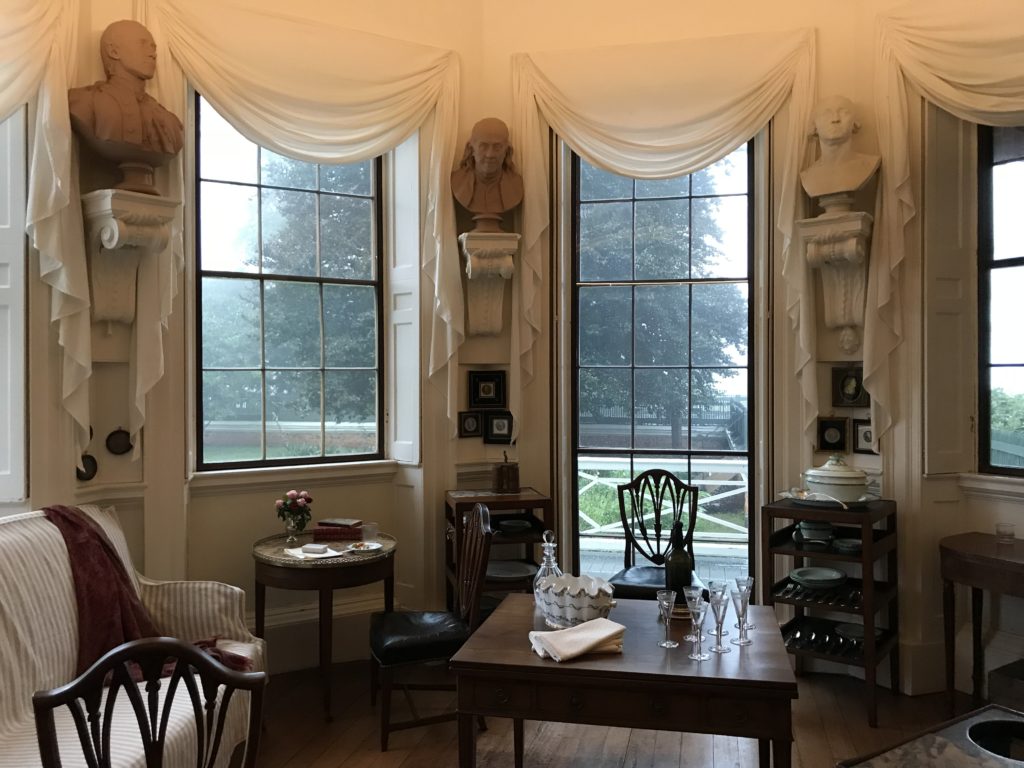
Some of the expensive china and silver from Europe were only to be handled by Jefferson’s daughters.

Another view of the tea room during the sunny day.

The Madison Room was named for Dolly and James Madison who were frequent guests. I thought this was funny since Madison’s home, Montpelier, was only located about 3o miles away. If you decide to visit Monticello, you must also visit Montpelier.

The Madison room was included on the house tour when it was raining but when I went back the next day, we skipped this room and went out to the North Pavilion.

The curators at Monticello are art historians, detectives, and interior designers. They are always trying to find original paint colors and fabrics and even design furniture based on designs found in the archives. You can even buy some of them online and in the gift shop.
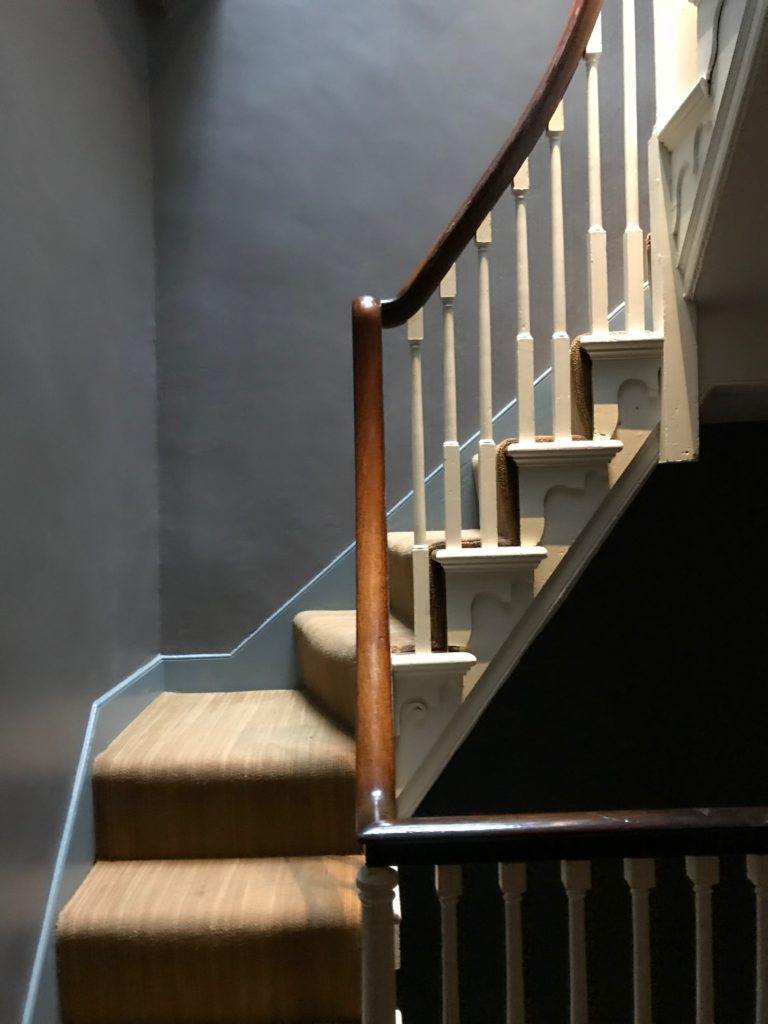
Jefferson never went upstairs and didn’t want to create a space wasting central grand staircase so there are two very narrow and treacherous staircases on each side of the house. It makes the curators wonder if some furniture was actually put together upstairs.

On of the most awe inspiring rooms is the Dome Room that sits under the dome inspired by the Temple of Vesta in Room as depicted by Palladio. It includes an oculus and half mirrored windows to hide parts of the house.

It was used for guest, family members, storage, and at times it was even left empty which someone described as “a great pity” since it was a “noble and beautiful apartment.”
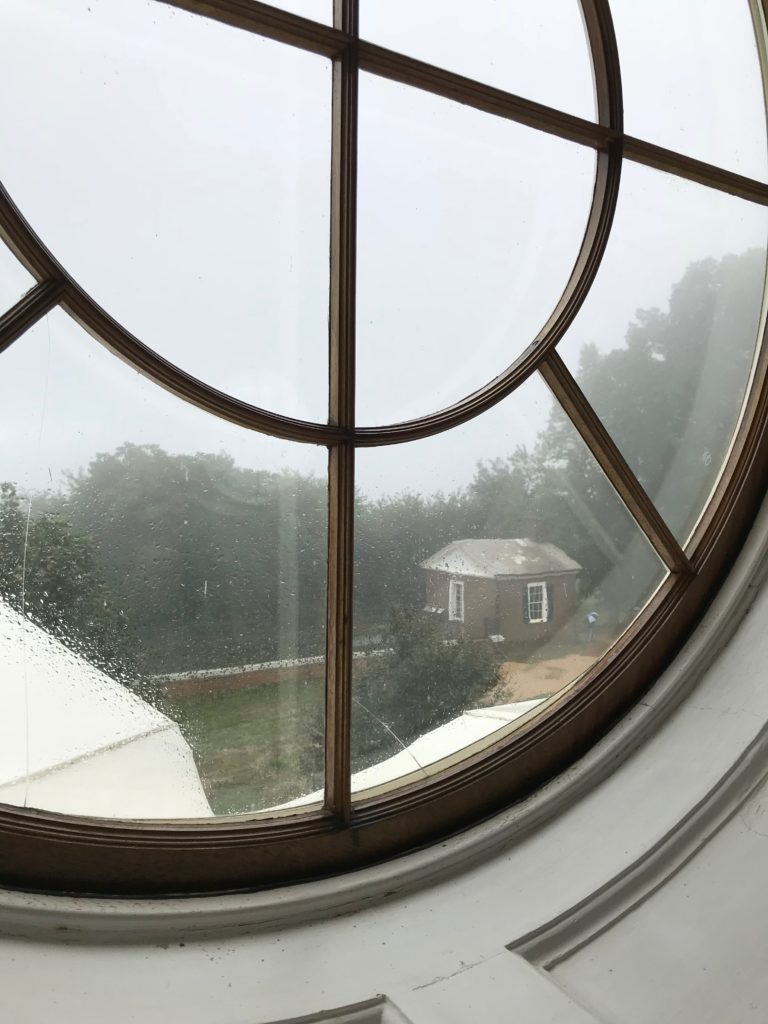
The windows pivot open for ventilation.

Behind the doors on the far side of the room and down some stairs is the Cuddy that some of Jefferson’s daughters uses as private space to read and draw.

The Aunt Marks’ Room housed Thomas Jefferson’s younger sister after the death of ther husband.
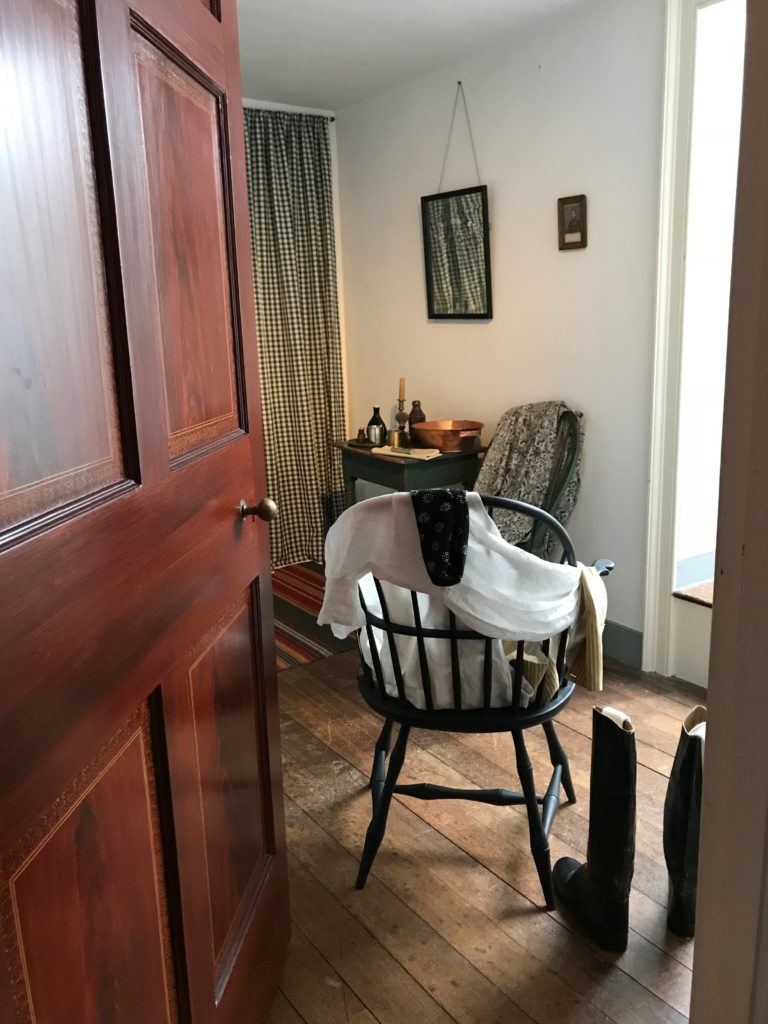
Upstairs also includes a North Bedroom for Jefferson’s grandsons and this room for one of his son in laws.

This was one of his daughter’s bedrooms.

The Nursery housed grandchildren and great grandchildren and their nurse. The smaller windows were perhaps planned so no one could push their siblings out.

The grandest upstairs bedroom belonged to Jefferson’s oldest daughter, Martha Jefferson Randolph. The toile lit a la Polonaise was sent back from France.
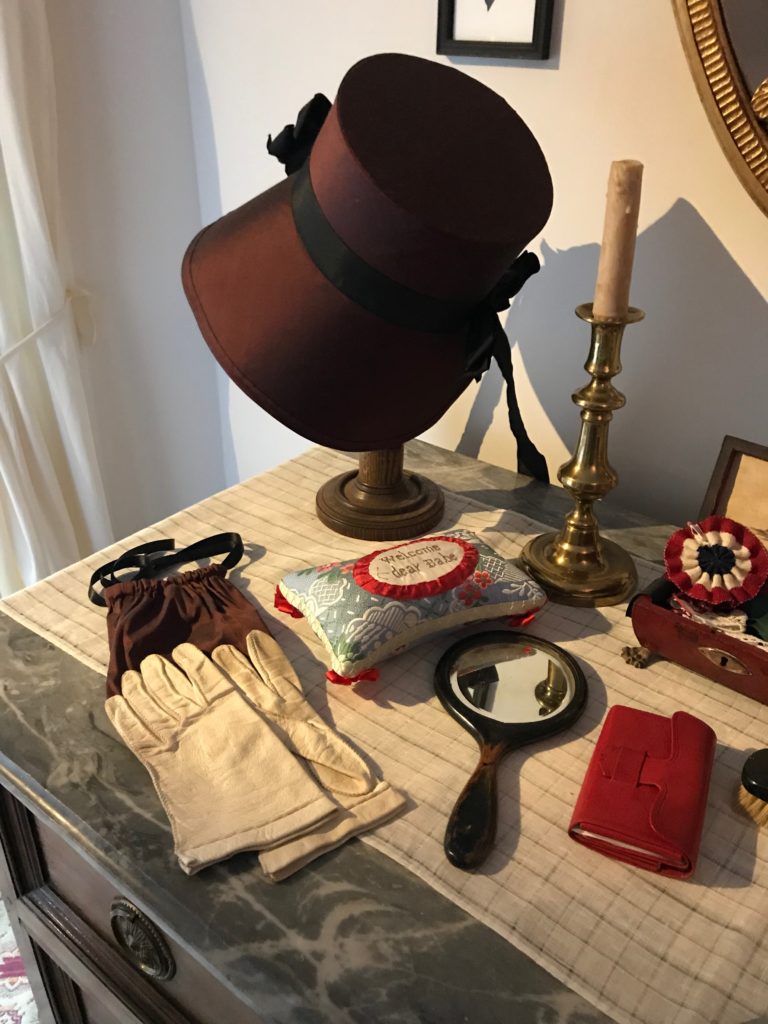
Martha Jefferson Randolph’s dressing table. The upstairs rooms can be toured as part of the Behind the Scenes Tour.
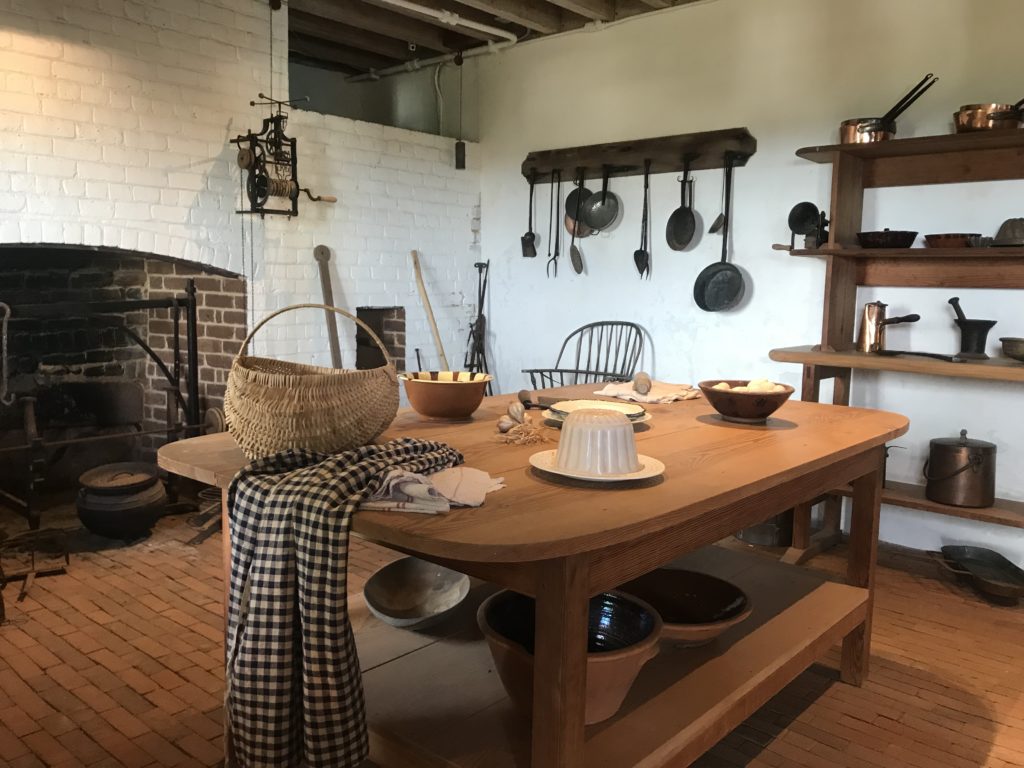
The first floor rooms are part of the regular tour but you can explore the cellar and north and south wings that house all the rooms necessary for household operations that were hidden underground.

The kitchen was overseen by an enslaved cook who was taken to Paris to learn French cooking for Thomas Jefferson. The cook slept in a room next to the kitchen.

Storage rooms can also be found downstairs.
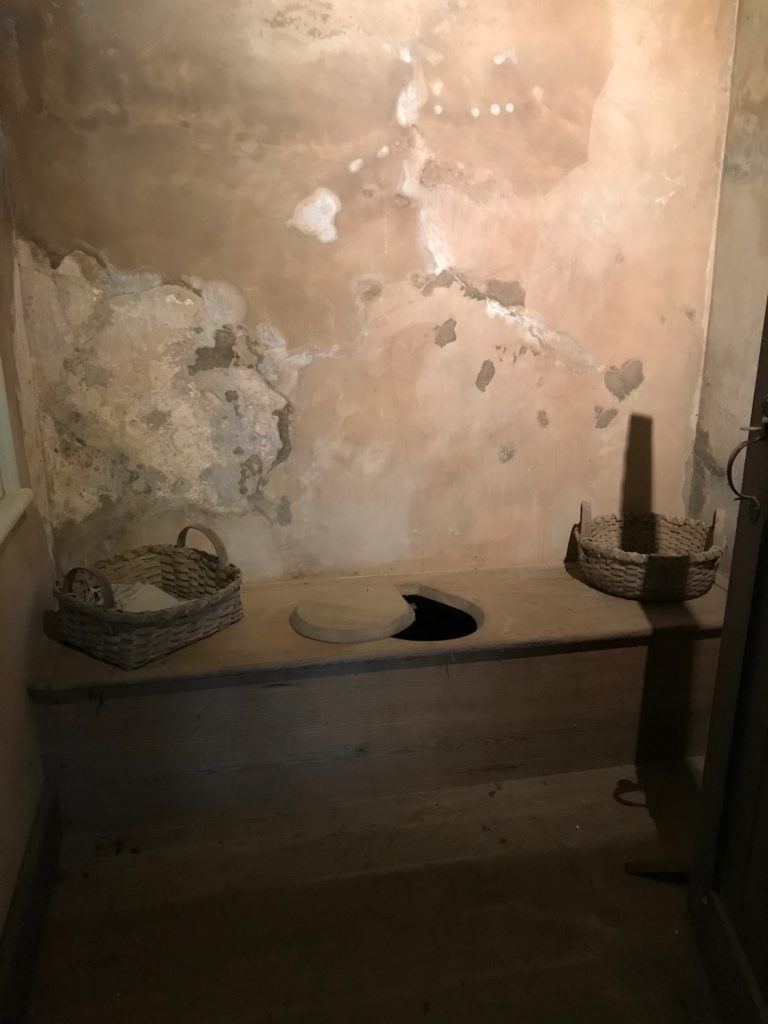
Every time I think I was born in the wrong century, I am brought back to reality by rustic toilet facilities. What’s funny is that most houses of this time period did not have indoor facilities and Monticello had three privies. Two were located on the south side of the house and one was in Jefferson’s bedchamber. They were non-flushing but attached to shafts for ventilation and slaves were paid to clean them.

The front of the house is where you start your tour but the back West Facade is the best side to photograph and was used on the back of the nickel.

It still looked pretty on my first rainy visit.
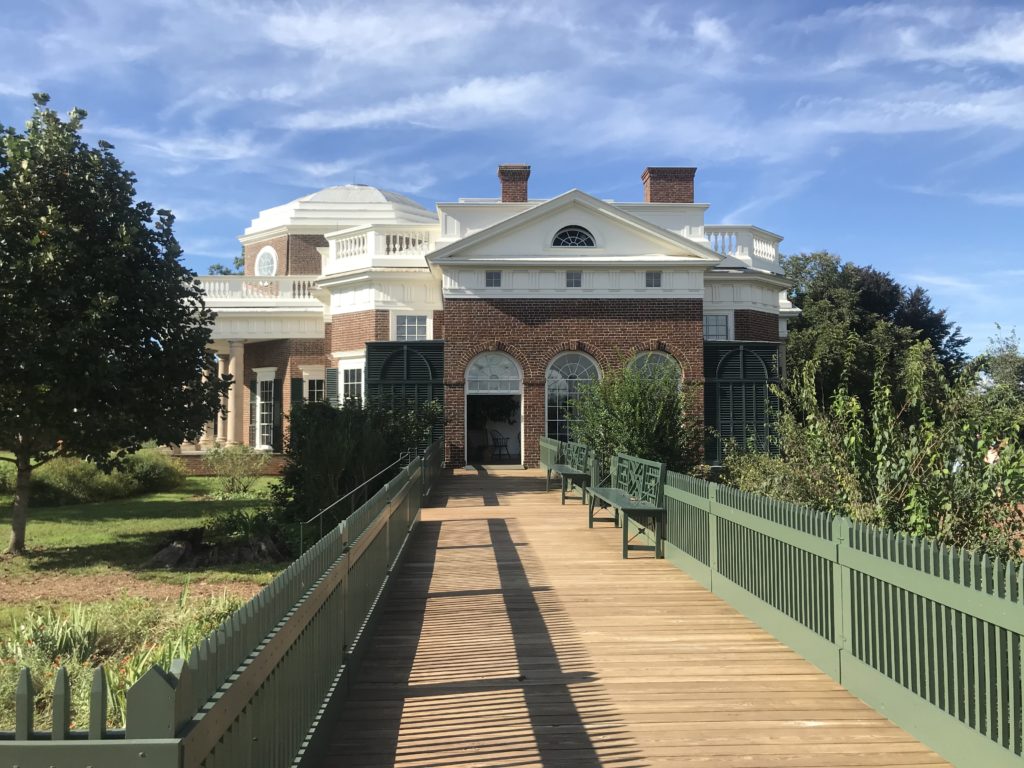
The terrace wings connect the house to the pavilions and hide the working rooms below.

The Greenhouse is attached to Jefferson’s rooms.

The spherical sundial tells time by the shadow that falls from the iron bar across the vertical lines on the sphere.

Not sure if the sundial can tell the time in the rain.

When you walk out on the terrace to the north pavilion, you can see all the way to Charlottesville and the University of Virginia that Jefferson founded in 1825. It was said that tracked the progress of the school from this vantage point.
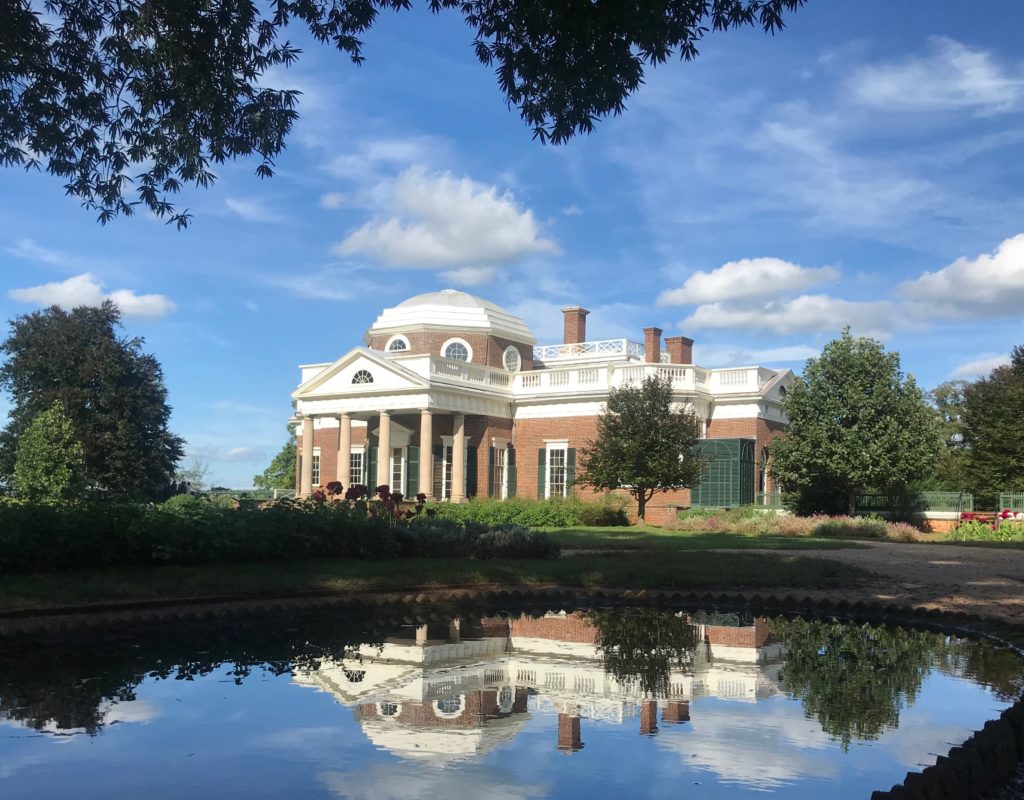
There are so many neoclassical architectural details that inspired the design on Monticello most of which came from The Four Books of Architecture by Palladio.

The vegetable garden had to feed the house and housed the Garden Pavilion.

The Garden Pavilion was where Jefferson enjoyed his garden after his second term as President.

Mulberry Row at Monticello included slave quarters, joiner’s shop, storehouse for iron, textile workshop, Hemmings cabin, and the stables.

Some people are offended when I visit homes in the South that kept slaves but I consider it educational. My family came from Europe and settled in the Northeast. My only knowledge of slavery is from books and movies. Visiting these homes gives me a better understanding of what slavery was really like in this country. Visiting does not mean I condone it. Monticello also doesn’t sweep the fact that Thomas Jefferson owned slaves under the rug. It’s mentioned in every tour and in all the rooms underground and along Mulberry Row where you can visit this slave quarter. There is also an exhibition about Sally Hemmings and slavery tours.
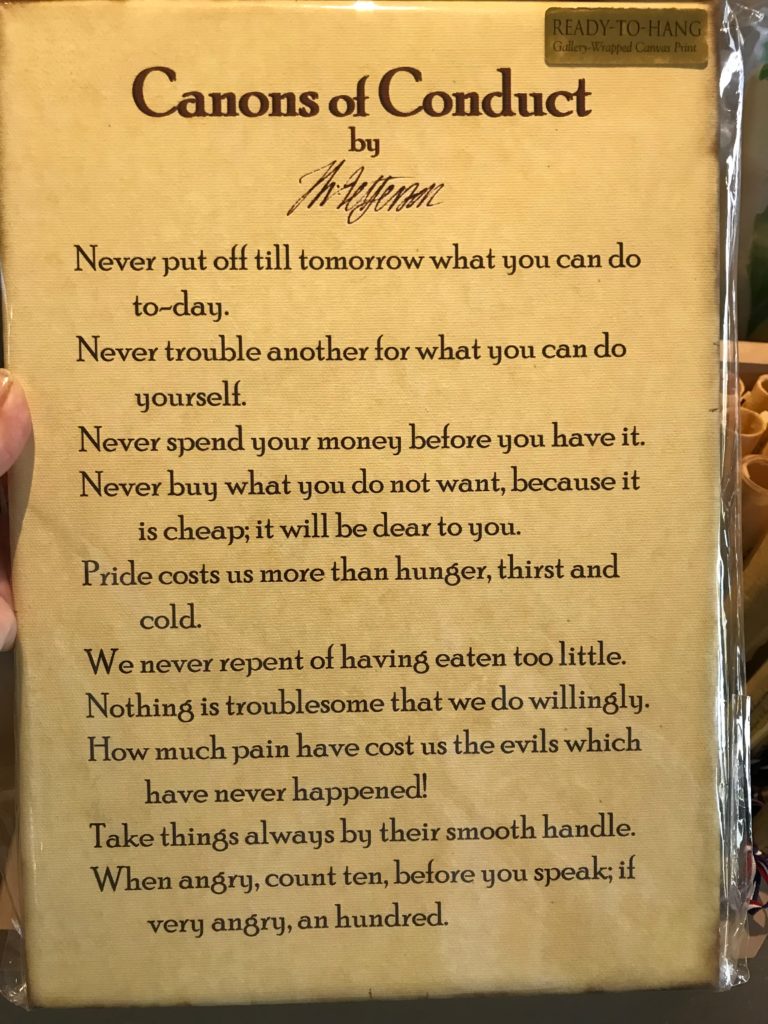
When you visit Monticello, there is a small Farmshop underneath the house if you need a bottle of water or a treat but give yourself time to visit the large Giftshop at the Visitor’s Center. It’s filled with amazing products like seeds, jams, honey, books, gift items, holiday decor, and much more.
One of my wishes this year was to visit historic homes that have been on my list since I studied them in my architectural art history classes. I’m so glad that I got to cross Monticello off the list. It ‘s an important part of our history as the home of a former President and is filled with so much design inspiration. I hope you will put it on your must visit list too.
This post is also just an overview. There is so much more information available on the house, rooms, gardens, slavery, and more on the Monticello website.

